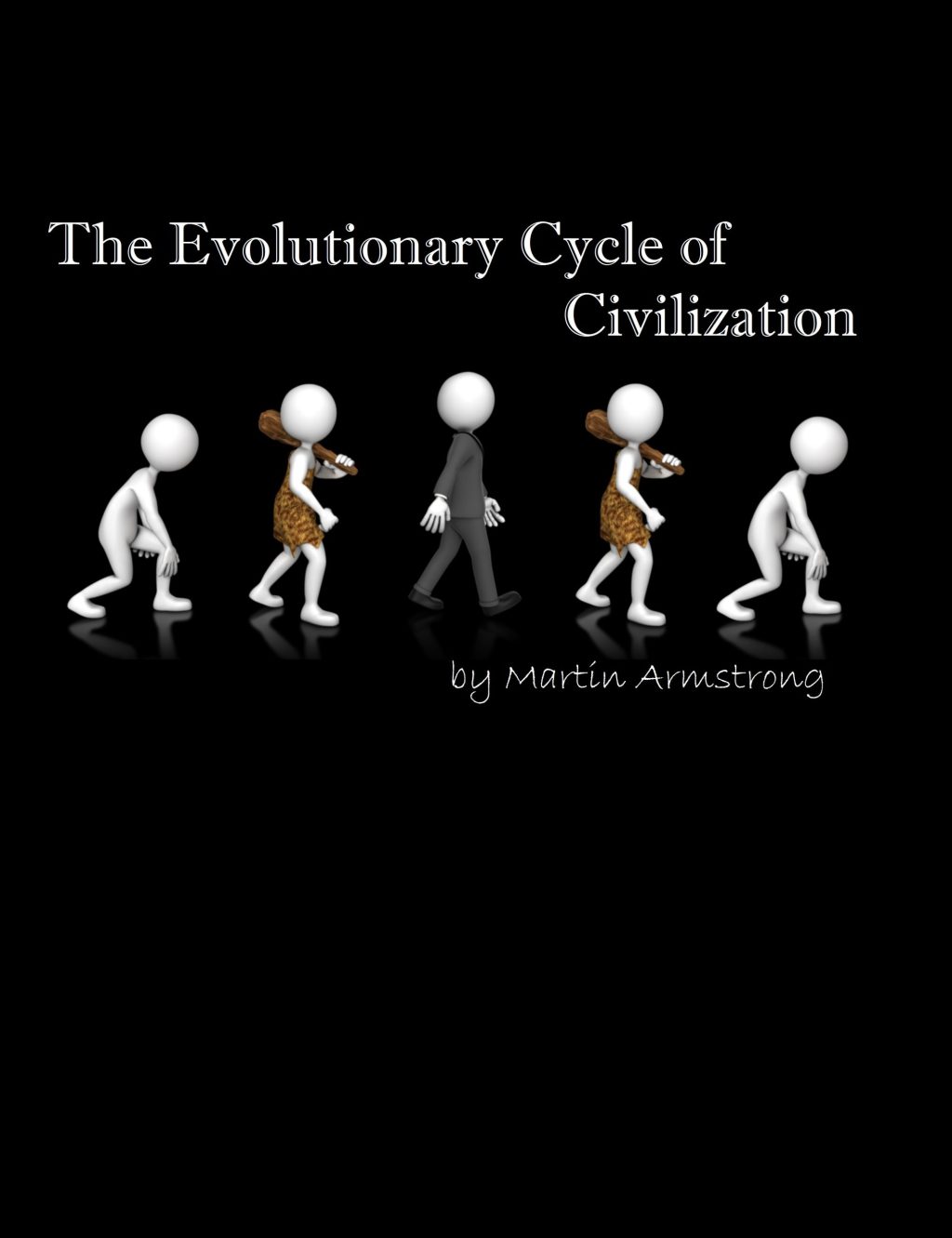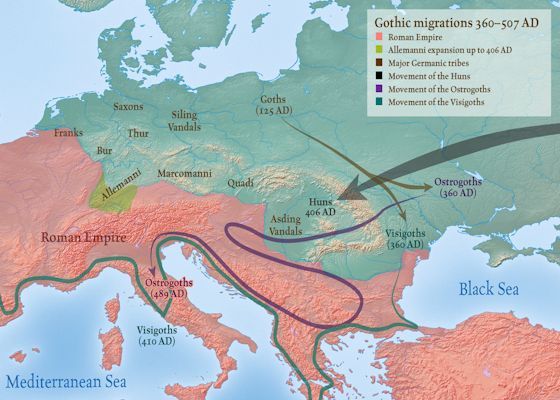QUESTION: Mr. Armstrong; you are probably the first pioneer in AI. My professor at … mentioned you often. My question is straight forward. Do you believe your system has evolved along the same path as the human mind and if so can it achieve self-awareness and perhaps consciousness?
ANSWER: I take it the sudden rush of questions on this topic came from a conference on Machine Learning in California recently. Forgive me for getting very technical here for the readers not interested in this subject.
The answer is yes and no. Whenever you create a system be it biological or artificial, there is an emergent behavior that evolves giving that system the appearance of intelligence. True, I began to notice that there was an emergent behavior that seems to evolve from cluster management of volumes of data when you allow the system to learn and create its own rules for constructing a knowledge base. These behaviors are fascinating.
I first discovered this when I created a system to mimic humans. I created a program that would interact with a person creating a dialog while remembering everything you said. I created this system in the early 1980’s and gave it to my children as test subjects. My daughter befriended it and to a child it accomplished everything and fully appeared human. It would ask you a question like do you have a dog? What is its name? During the next conversation, it would ask: How is the dog?
Behavior began to appear and this seems to be an emergence that springs from large distributed systems of data. This phenomenon we also experience in our human existence. We may taste some food, then we just have to have it as often as possible for a brief while. We eat too much of it and then suddenly our taste for it declines. The same will happen with a new song we listen to over and over again and then cannot stand to hear it one more time. This is a behavior that emerges and the same appears in computers. It does not make it “alive” but this is actually cyclical development. In any large-scale distributed system of data, there will emerge a cyclical pattern of what data is being referred to most often.
Go to a casino and just watch a roulette table. In theory, every number has an equal chance of winning. But in reality, the numbers will be cyclical. Some numbers will never come up while others repeat. It does not matter what system you look at, it will always revert to a cyclical pattern. This is the secret of nature. Observe the roulette wheel closely. The reason the house changes dealers rotating them is because this changes the cycle on that table. The cycle is not YOUR luck that will emerge from a string of times you might gamble, The house cycle differs with each dealer and that is the key to running the casino. This is why the casino rotates dealers because they fall into cycles and like counting cards, with a keen eye and an understanding of complex cyclical systems, you can see the the patterns emerge. (for your information, if I go to a casino and play roulette, within 15 minutes they come and say they recognize me as a”player” and want my name; casino understand cycles).
What emerges from any system is the unforeseen behavior arising out of sufficiently large groups of raw data. The real father of Chaos Theory was Edward Norton Lorenz (1917-2008) who was an American mathematician and meteorologist. Lorenz was certainly THE pioneer in Chaos Theory. A professor at MIT, Lorenz was the first to recognize what is now called chaotic behavior in the mathematical modeling of weather systems.
During the 1950’s, Lorenz observed that there was a cyclical non-linear nature to weather yet the field relied upon linear statistical models in meteorology to do weather forecasting. It was like trying to measure the circumference of a circle with a straight edge ruler. His work on the topic culminated in the publication of his 1963 paper Deterministic Non-periodic Flow in the Journal of the Atmospheric Sciences, and with it, the foundation of chaos theory. During the early 1960’s, Lorenz had access to early computers. He was running what he thought would be random numbers and began to observe there was a duality of a hidden repetitive nature. He graphed the numbers that were derived from his study of convection rolls in the atmosphere. What emerged has been perhaps one of the most important discoveries in modern time.
 This illustration of the Lorenz Strange Attractor is incredibly important and was first reported in 1963. Lorenz’s discovery of a strange attractor was made during an attempt to create a model of weather patterns. The actual experiment was an attempt to model atmospheric dynamics of the planet. It involved a truncated model of the Navier-Stokes equations. It is a visual example of a non-linear dynamic system corresponding to the long-term behavior in a cyclical manner revealing a hidden order we cannot otherwise observe. The Lorenz Strange Attractor is a 3-dimensional dynamical system that exhibits chaotic flow, noted for its interesting shape revolving around two invisible strange points in space-time we call Strange Attractors. The map shows how the state of a dynamical system with three variables of a three-dimensional system evolves over the fourth dimension time in a complex, yet non-repeating pattern. In other words, here is a visualization of duality – what appears to be randomness (chaos) yet simultaneously there is a broader clear pattern of order. The same identical structure appears in light where it is both a wave form and particle, as we see in the economy where we retain our individuality yet at the same time we are part of a broader collective pattern. This is the very essence of the Invisible Hand – or in Lorenz terms, a Strange Attractor.
This illustration of the Lorenz Strange Attractor is incredibly important and was first reported in 1963. Lorenz’s discovery of a strange attractor was made during an attempt to create a model of weather patterns. The actual experiment was an attempt to model atmospheric dynamics of the planet. It involved a truncated model of the Navier-Stokes equations. It is a visual example of a non-linear dynamic system corresponding to the long-term behavior in a cyclical manner revealing a hidden order we cannot otherwise observe. The Lorenz Strange Attractor is a 3-dimensional dynamical system that exhibits chaotic flow, noted for its interesting shape revolving around two invisible strange points in space-time we call Strange Attractors. The map shows how the state of a dynamical system with three variables of a three-dimensional system evolves over the fourth dimension time in a complex, yet non-repeating pattern. In other words, here is a visualization of duality – what appears to be randomness (chaos) yet simultaneously there is a broader clear pattern of order. The same identical structure appears in light where it is both a wave form and particle, as we see in the economy where we retain our individuality yet at the same time we are part of a broader collective pattern. This is the very essence of the Invisible Hand – or in Lorenz terms, a Strange Attractor.
Biology emerges from the laws of chemistry. This is the same structured emergence. You have the raw behavior patterns that when they combine you get a functioning biological entity. This is what takes place, It is an emergence or raw data that within it lies hidden behavioral patterns that on the surface are complex and we assume is just random chaos. When plotted, what emerges can be absolutely fascinating behavior revealing ordered systems that lie beneath. This is what Lorenz discovered we call chaos theory.
There is a natural order of emergent systems within systems. The placement and prioritization of some data simply cannot be entirely predictable in any linear model. Systems will reach a certain level of complexity and what will emerge are these cyclical patterns as in simply observing a roulette wheel and then it starts to surface demonstrating emergent behavior. The casino will change the dealer to stop this cyclical emergent pattern that the players will eventually adapt to and beat the odds.
The real difficult part in computing is the mere fact that it can be extremely hard to know what to do with such emergent behavior unless you understand the complexity of cyclical systems. When you construct such massive data systems you will create emergent behavior. It is inherent within everything around us just as we see such complexity in the Mandelbrot Set as seen in this detail.
This emergent behavior maybe sometimes unexpected.The reason for this is simply that there is a hidden order in the surface appearing chaos that springs from the greater cluster of information in a knowledge based system. The sheer scale of the system at a certain level of complexity allows this cyclical hidden order to appear and this then demonstrates an emergent behavior. The key is comprehending this aspect that is totally nonlinear.
I have devoted tremendous resources to develop this knowledge base. The computer records interactions on a grand scale and this is tested all the time. I have rejected outside funding because of this emergent behavior that has allowed the system to even predict war. It took me some time to begin to comprehend how could this system possibly forecast something I had not deliberately coded? It took me nearly a decade of observation before even I understood what was emerging before my eyes. This was in fact emergent behavior within the system that the computer discovered.
There is an overall software application, but this is then layered over the hardware containing the cluster of data and then there are sub-applications that the overall primary layer then arbitrages as they are prioritized with an innumerable number of tasks according to the size of each economy. It may appear to be unstable since there is no linear rule actually being followed. However, everything is changing according to capital flows that result in the movement of capital internationally that defies creating some rule such as the dollar is the reserve currency that like eat some recent discovered food causes us to want more and more until we move on and do not care for it again. Everything is evolving and nothing is fixed.
There is simply far more complexity involved that we can logically order in some linear fashion. This is why I say it is a bell curve and at some point the same fundamental will flip and produce the opposite effect. This complexity distinguishes the process required and defies linear analysis. Honestly, it may take more than a $100 million to finish this project. I may not even live to see the end for it is dynamic in-and-of-itself. My goal has been to provide predictable behaviors within such complex systems that I can achieve self-awareness, but unlikely to achieve self-consciousness.
This sort of fuzzy chaos represents the new norm for massive distributed knowledge base systems. It is a whole new frontier to be discovered. Yes I may be further advanced than others exploring this field. But it has also been my curse as people try to just steal such technology failing to realize that they are unlikely to even comprehend its cyclical complexity with linear thinking. It requires a change in the way we see the world around us and an understanding of cyclical behavior.














